Comparison of Two Approaches to GNSS Positioning Using Code Pseudoranges Generated by Smartphone Device
Abstract
1. Introduction
2. App and Tools for the Collection and Elaboration of Raw GNSS Measurements
2.1. App for the Collection of Raw GNSS Measurements
2.2. Tools for the Elaboration of Raw GNSS Measurements
- AP Launcher (RTKLAUNCH);
- Real-Time Positioning (RTKNAVI);
- Communication Server (STRSVR);
- Post-Processing Analysis (RTKPOST);
- RINEX Converter (RTKCONV);
- Plot Solutions and Observation Data (RTKPLOT);
- Downloader of GNSS Data (RTKGET);
- NTRIP Browser (SRCTBLBROWS).
- Ultra-fast (±15 cm), available every 90 min;
- Rapid (±5 cm), available the next day;
- Finals (±2 cm), available 13–15 days after the end of the week.
3. Materials and Methods
3.1. Materials
3.2. Data Collection
3.3. Data Processing
- i = 1, …, n;
- n is equal to the number of observations for 5, 10, 15, 30 and 60 min: n = 9 for the 5, 10 and 15 min datasets; n = 7 for the 30 and 60 min datasets.
- x(i) i-th is the smallest value (ΔE(i), ΔN(i), ΔU(i)) of the sub-dataset (ΔE, ΔN, ΔU);
- is the arithmetic mean of the values (ΔEi, ΔNi, ΔUi) of the sub-dataset (ΔE, ΔN, ΔU);
- ai is equal to
- m’ = m1, …, mn
- m1, …, mn are expected values of the ranks of a standardised random number;
- V is the matrix of the covariance of ranks.
- H0: Distribution of the dataset normal;
- H1: Distribution of the dataset not normal.
- If the p-value > 0.05, the null hypothesis H0 is accepted;
- If the p-value < 0.05, the null hypothesis H0 is rejected.
- Q1 is the first quartile;
- Q3 is the third quartile;
- IQR is the interquartile range equal to Q3 – Q1
- Choice of the number of classes K (K = 2);
- Setting of a mean cluster centre Ci (i = 1, 2) for elements xi of classes K;
- Assignment of the elements xi to one of the two classes Ci respecting the following condition:
- 4.
- Calculation of the new cluster centres:
- 5.
- If the clustering remains unchanged for two successive steps, it ends. Otherwise, it restarts from step 2.
- If a cluster has a number of elements greater than 2, xi > 2, the element farthest from the cluster centre is deleted respecting the following condition:
- 2.
- If a cluster has a number of elements equal to 2, no element is eliminated since both are equidistant from Ci;
- 3.
- If a cluster consists of only one element, only that element is deleted from the sub-dataset.
4. Results
4.1. Normality Test
4.2. Evaluation of DGNSS and SPP Standard Deviation
4.3. Evaluation of DGNSS Positioning Error
4.4. Evaluation of Single Point Positioning Error
5. Discussion
6. Conclusions
Author Contributions
Funding
Institutional Review Board Statement
Informed Consent Statement
Data Availability Statement
Acknowledgments
Conflicts of Interest
Abbreviations
| E | sub-dataset of smartphone Easting positioning coordinates. |
| N | sub-dataset of smartphone Northing positioning coordinates. |
| U | sub-dataset of smartphone Up positioning. |
| SDE | sub-dataset of the standard deviation of smartphone Easting positioning. |
| SDN | sub-dataset of the standard deviation of smartphone Northing positioning. |
| SDU | sub-dataset of the standard deviation of smartphone Up positioning. |
| RMS | Root Mean Square. |
| NTNV | Normality Test Not Verified. |
| ΔE | sub-dataset of Easting positioning errors between smartphone and FATA. |
| ΔN | sub-dataset of Northing positioning errors between smartphone and FATA. |
| ΔU | sub-dataset of Up positioning errors between smartphone and FATA. |
| ΔEMm | sub-dataset of Easting positioning errors between smartphone and FATA, the outliers were eliminated by Tukey’s method. |
| ΔNMm | sub-dataset of Northing positioning errors between smartphone and FATA, the outliers were eliminated by Tukey’s method. |
| ΔUMm | sub-dataset of Up positioning errors between smartphone and FATA, the outliers were eliminated by Tukey’s method. |
| ΔEKm | sub-dataset of Easting positioning errors between smartphone and FATA, the outliers were eliminated by K-Means algorithm. |
| ΔNKm | sub-dataset of Northing positioning errors between smartphone and FATA, the outliers were eliminated by K-Means algorithm. |
| ΔUKm | sub-dataset of Up positioning errors between smartphone and FATA, the outliers were eliminated by K-Means algorithm. |
Appendix A
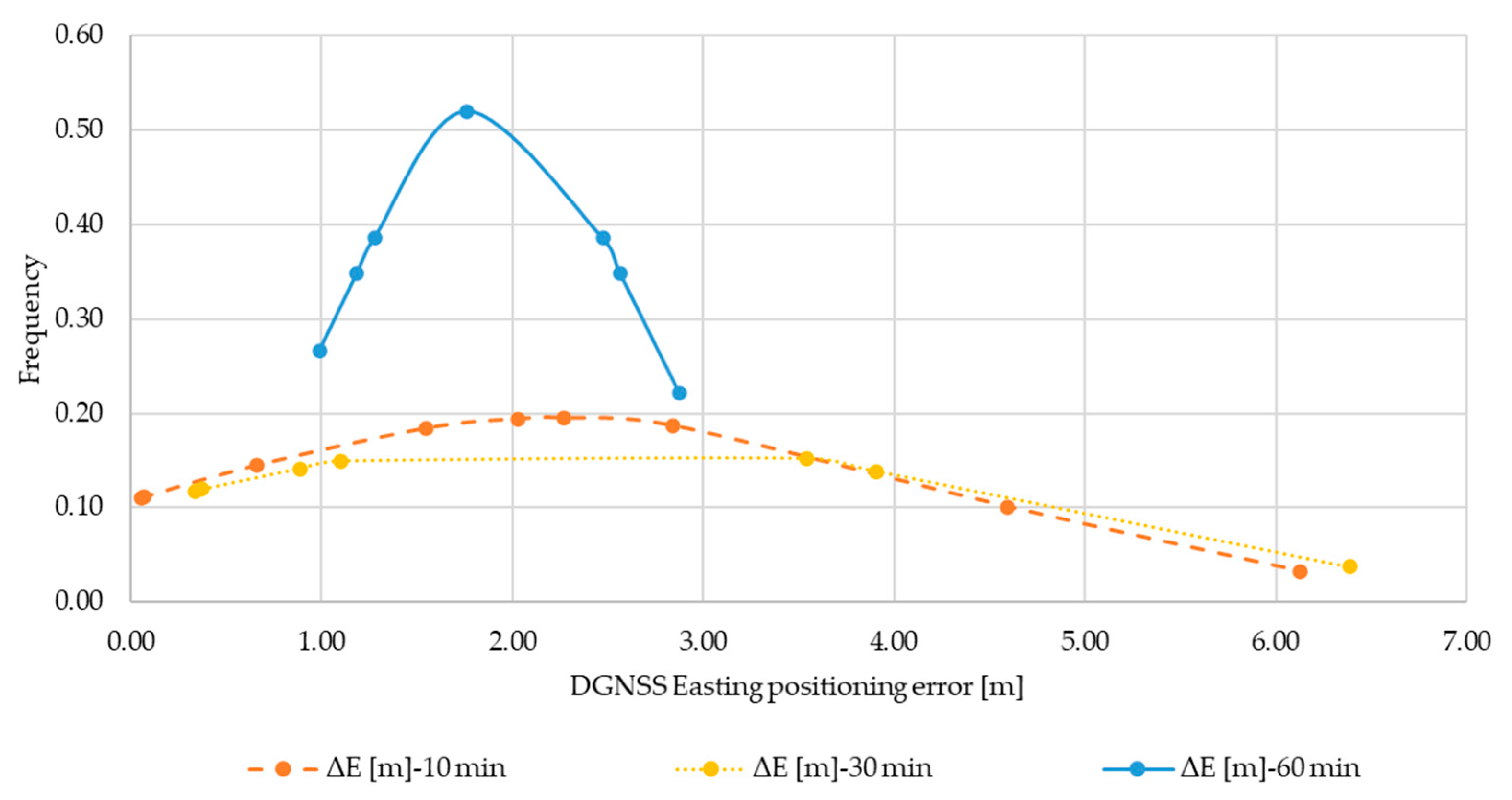
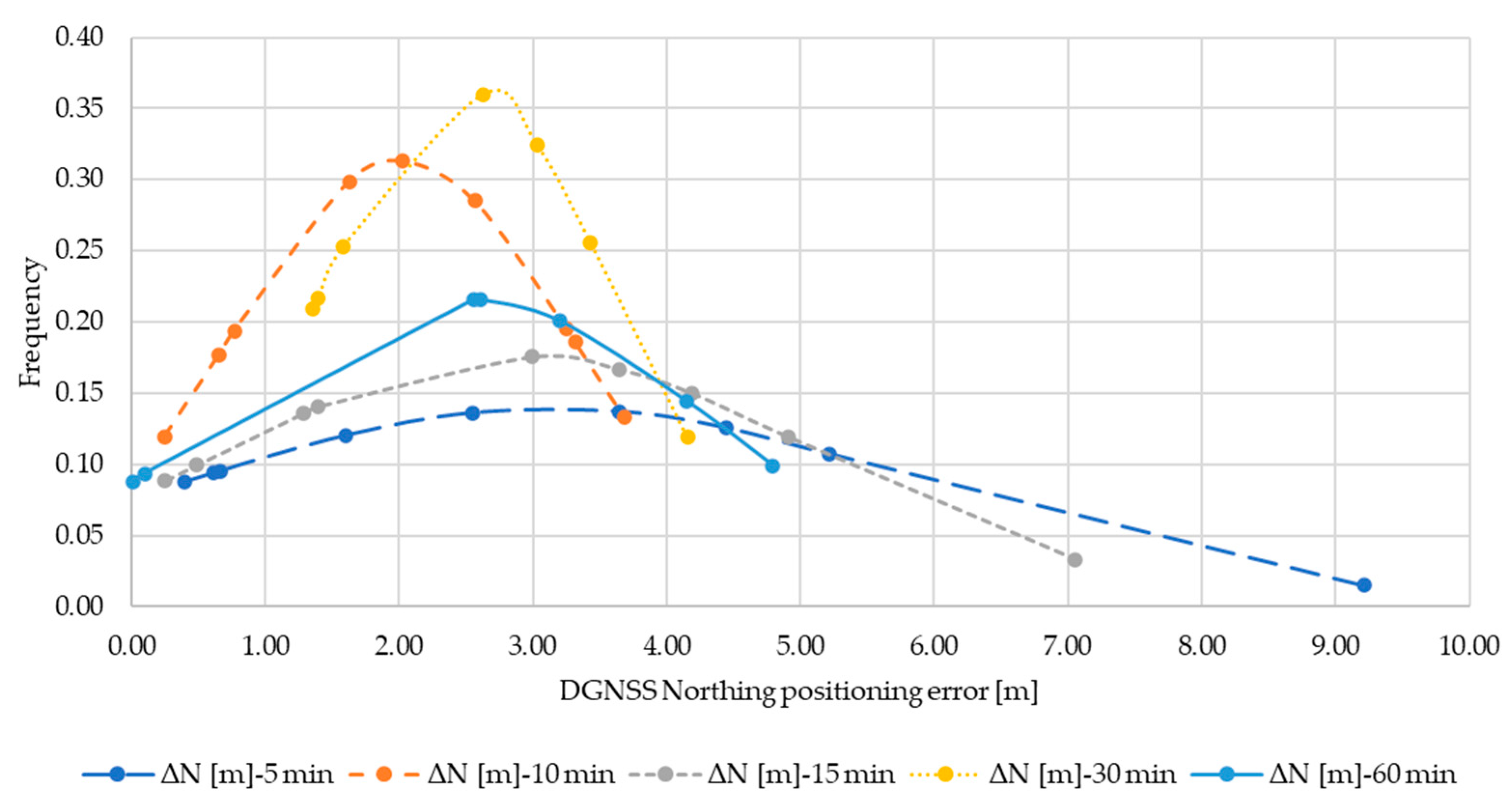
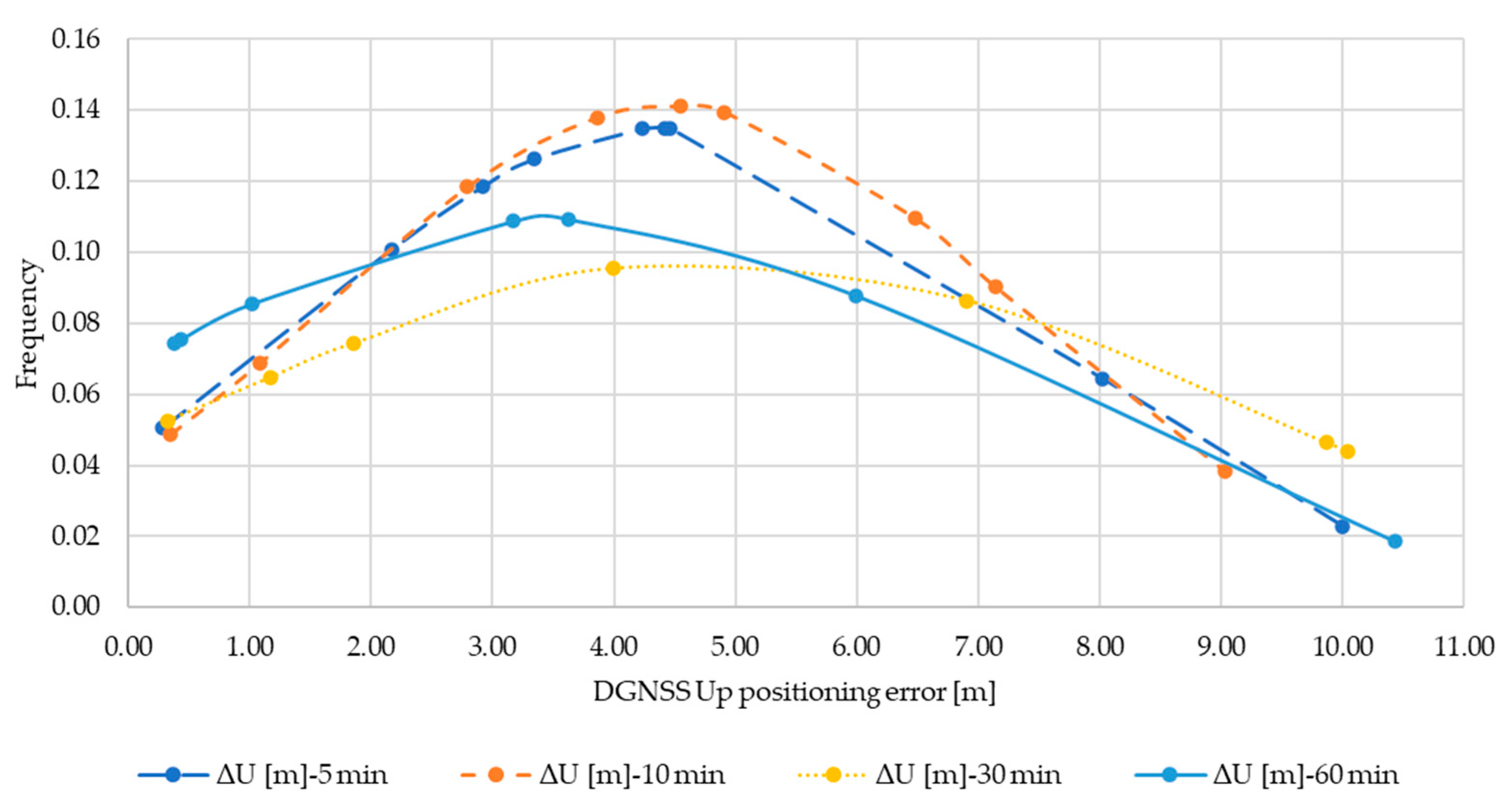
Appendix B
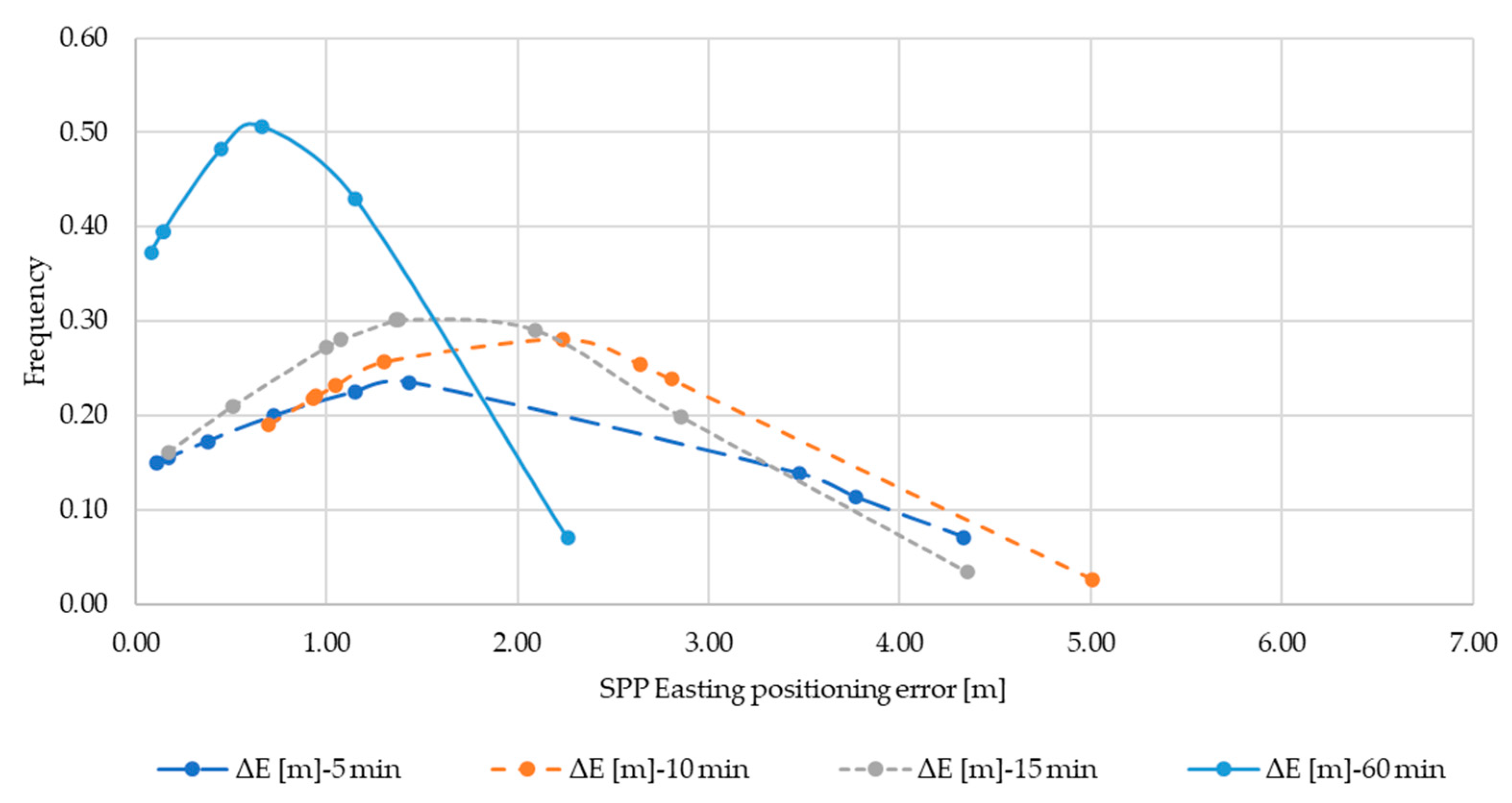

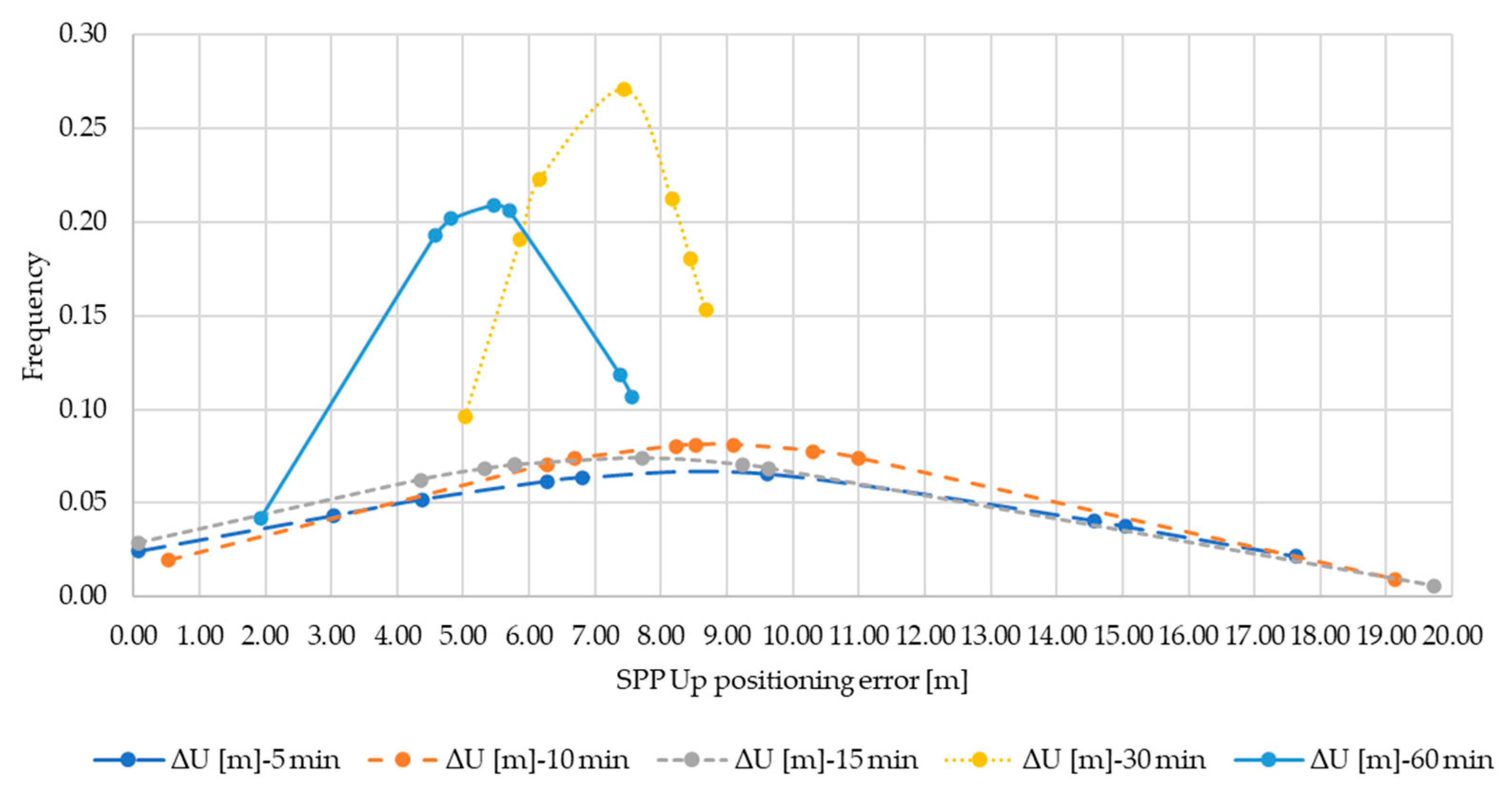
Appendix C
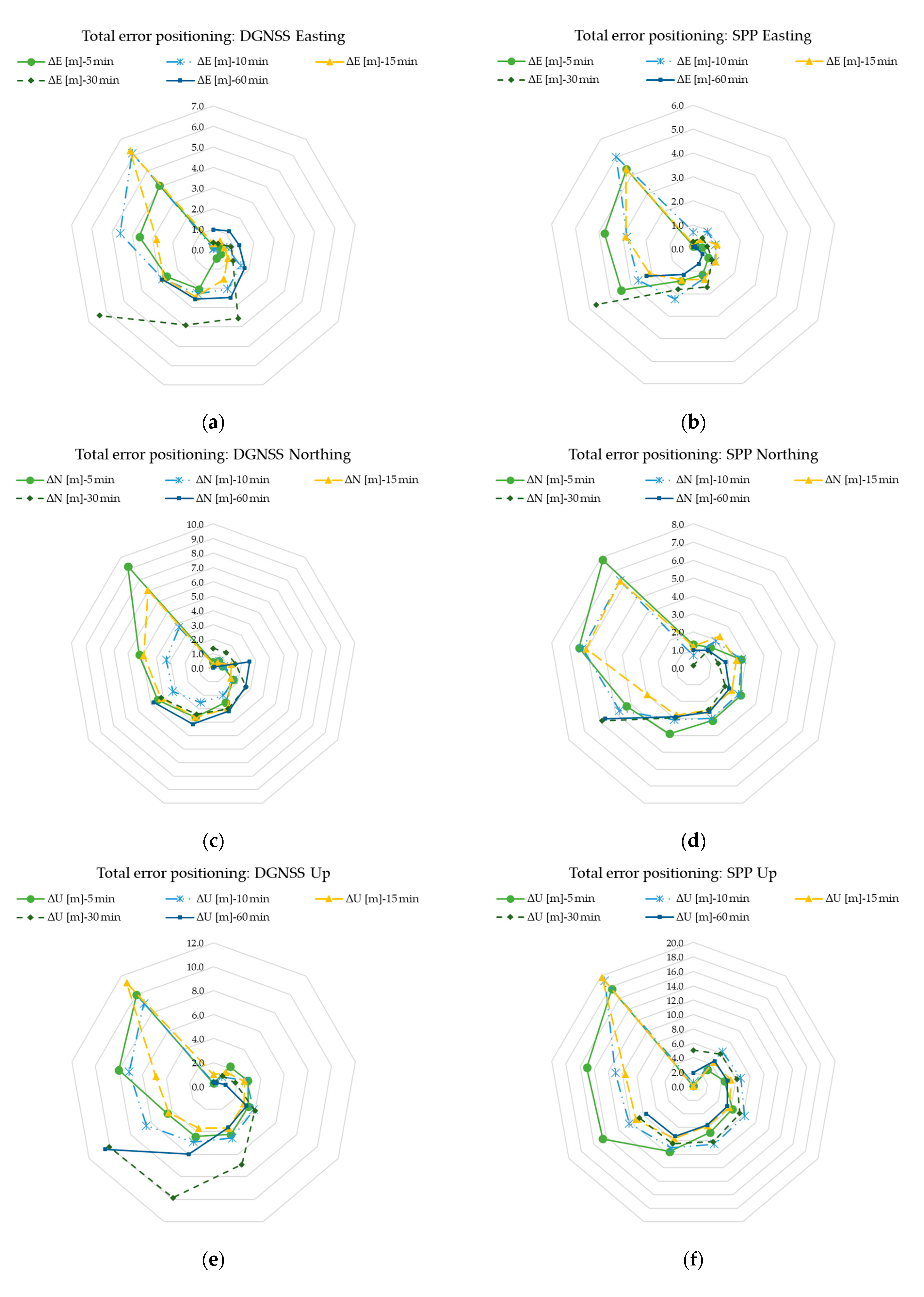
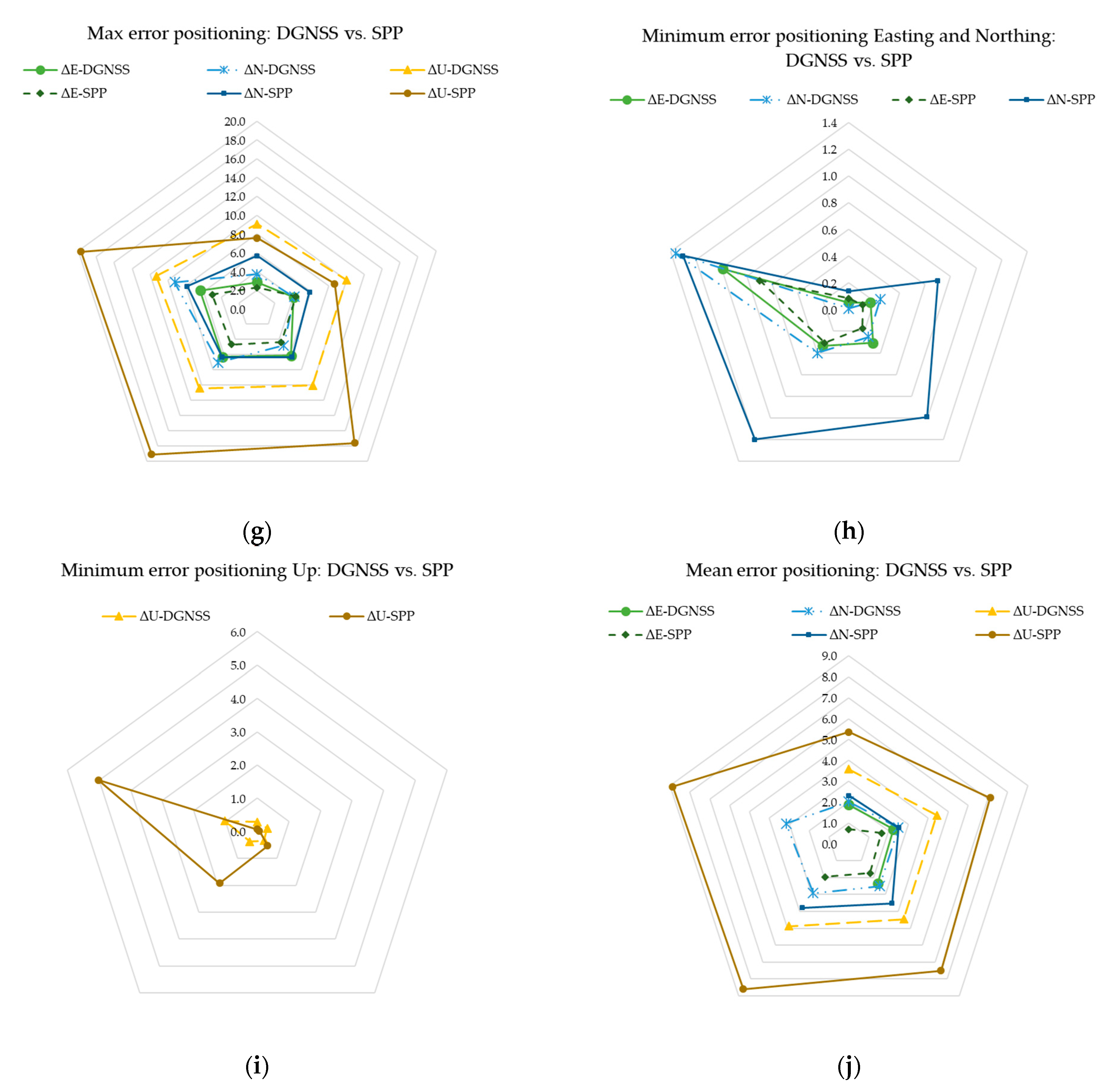
References
- European GNSS Agency. White Paper on Using GNSS Raw Measurements on Android Devices. 2017. Available online: https://www.euspa.europa.eu/newsroom/news/available-now-white-paper-using-gnss-raw-measurements-android-devices (accessed on 3 May 2021).
- Dabove, P.; Di Pietra, V.; Piras, M. GNSS Positioning Using Mobile Devices with the Android Operating System. ISPRS Int. J. Geoinf. 2020, 9, 220. [Google Scholar] [CrossRef]
- Gioia, C.; Borio, D. Android Positioning: From Stand-Alone to Cooperative Approaches. Appl. Geomat. 2020, 1–22. [Google Scholar] [CrossRef]
- Zhang, X.; Tao, X.; Zhu, F.; Shi, X.; Wang, F. Quality Assessment of GNSS Observations from an Android N Smartphone and Positioning Performance Analysis Using Time-Differenced Filtering Approach. Gps Solut. 2018, 22, 1–11. [Google Scholar] [CrossRef]
- Zhang, K.; Jiao, W.; Wang, L.; Li, Z.; Li, J.; Zhou, K. Smart-RTK: Multi-GNSS Kinematic Positioning Approach on Android Smart Devices with Doppler-Smoothed-Code Filter and Constant Acceleration Model. Adv. Space Res. 2019, 64, 1662–1674. [Google Scholar] [CrossRef]
- Liu, W.; Shi, X.; Zhu, F.; Tao, X.; Wang, F. Quality Analysis of Multi-GNSS Raw Observations and a Velocity-Aided Positioning Approach Based on Smartphones. Adv. Space Res. 2019, 63, 2358–2377. [Google Scholar] [CrossRef]
- Guo, L.; Wang, F.; Sang, J.; Lin, X.; Gong, X.; Zhang, W. Characteristics Analysis of Raw Multi-GNSS Measurement from Xiaomi Mi 8 and Positioning Performance Improvement with L5/E5 Frequency in an Urban Environment. Remote Sens. 2020, 12, 744. [Google Scholar] [CrossRef]
- Realini, E.; Caldera, S.; Pertusini, L.; Sampietro, D. Precise GNSS Positioning Using Smart Devices. Sensors 2017, 17, 2434. [Google Scholar] [CrossRef] [PubMed]
- Dabove, P.; Di Pietra, V.; Hatem, S.; Piras, M. GNSS Positioning Using Android Smartphone. In Proceedings of the GISTAM 2019, Heraklion, Greece, 3–5 May 2019; pp. 135–142. [Google Scholar]
- Wanninger, L.; Heßelbarth, A. GNSS Code and Carrier Phase Observations of a Huawei P30 Smartphone: Quality Assessment and Centimeter-Accurate Positioning. GPS Solut. 2020, 24, 1–9. [Google Scholar] [CrossRef]
- Gogoi, N.; Minetto, A.; Linty, N.; Dovis, F. A Controlled-Environment Quality Assessment of Android GNSS Raw Measurements. Electronics 2019, 8, 5. [Google Scholar] [CrossRef]
- Li, G.; Geng, J. Characteristics of Raw Multi-GNSS Measurement Error from Google Android Smart Devices. GPS Solut. 2019, 23, 1–16. [Google Scholar] [CrossRef]
- Elmezayen, A.; El-Rabbany, A. Precise Point Positioning Using World’s First Dual-Frequency GPS/GALILEO Smartphone. Sensors 2019, 19, 2593. [Google Scholar] [CrossRef]
- Paziewski, J.; Fortunato, M.; Mazzoni, A.; Odolinski, R. An Analysis of Multi-GNSS Observations Tracked by Recent Android Smartphones and Smartphone-Only Relative Positioning Results. Measurement 2021, 175, 109162. [Google Scholar] [CrossRef]
- Robustelli, U.; Paziewski, J.; Pugliano, G. Observation Quality Assessment and Performance of GNSS Standalone Positioning with Code Pseudoranges of Dual-Frequency Android Smartphones. Sensors 2021, 21, 2125. [Google Scholar] [CrossRef] [PubMed]
- Wübbena, T.; Darugna, F.; Ito, A.; Wübbena, J. Geo++’s Experiments on Android GNSS Raw Data. In Proceedings of the GNSS Raw Measurements Taskforce Workshop, GSA Headquarters, Prague, Czech Republic, 30 May 2018. [Google Scholar]
- Takasu, T. RTKLIB Ver. 2.4. 2 Manual. RTKLIB: An Open Source Program Package for GNSS Positioning. 2013, pp. 29–49. Available online: http://www.rtklib.com/prog/manual_2.4.2.pdf (accessed on 3 May 2021).
- Takasu, T.; Yasuda, A. Development of the Low-Cost RTK-GPS Receiver with an Open Source Program Package RTKLIB. In Proceedings of the International Symposium on GPS/GNSS, International Convention Center, Jeju, Korea, 4–6 November 2009; Volume 1. [Google Scholar]
- Tétreault, P.; Kouba, J.; Héroux, P.; Legree, P. CSRS-PPP: An Internet Service for GPS User Access to the Canadian Spatial Reference Frame. Geomatica 2005, 59, 17–28. [Google Scholar] [CrossRef]
- Banvile, S. CSRS-PPP Version 3: Tutorial. Available online: https://www.blackdotgnss.com/2020/09/18/csrs-ppp-version-3-ppp-ar/ (accessed on 3 March 2021).
- Alkan, R.M.; Ozulu, I.M.; İlçi, V. Performance Evaluation of Single Baseline and Network RTK GNSS. Coordinates 2017, 13, 11–15. [Google Scholar]
- Pepe, M. CORS Architecture and Evaluation of Positioning by Low-Cost GNSS Receiver. Geod. Cartogr. 2018, 44, 36–44. [Google Scholar] [CrossRef]
- Galeandro, A.; Abate, G.; Capra, A.; Costantino, D. Installazione e Controllo Della Nuova Stazione GPS Permanente Di Taranto; IX Conferenza Nazionale ASITA: Catania, Italy, 2005; pp. 1125–1127. [Google Scholar]
- Shapiro, S.S.; Wilk, M.B. An Analysis of Variance Test for Normality (Complete Samples). Biometrika 1965, 52, 591–611. [Google Scholar] [CrossRef]
- Kannan, K.S.; Manoj, K.; Arumugam, S. Labeling Methods for Identifying Outliers. Int. J. Stat. Syst. 2015, 10, 231–238. [Google Scholar]
- Hoaglin, D.C.; Iglewicz, B.; Tukey, J.W. Performance of Some Resistant Rules for Outlier Labeling. J. Am. Stat. Assoc. 1986, 81, 991–999. [Google Scholar] [CrossRef]
- Tukey, J.W. Exploratory Data Analysis; Addison-Wesley: Reading, MA, USA, 1977. [Google Scholar]
- Barai, A.; Dey, L. Outlier Detection and Removal Algorithm in K-Means and Hierarchical Clustering. World J. Comput. Appl. Technol. 2017, 5, 24–29. [Google Scholar] [CrossRef]
- Yadav, J.; Sharma, M. A Review of K-Mean Algorithm. Int. J. Eng. Trends Technol. 2013, 4, 2972–2976. [Google Scholar]
- Moore, D.S.; Notz, W.I.; Fligner, M.A. The Basic Practice of Statistics, 8th ed.; Wh Freeman: New York, NY, USA, 2015; p. 654. [Google Scholar]
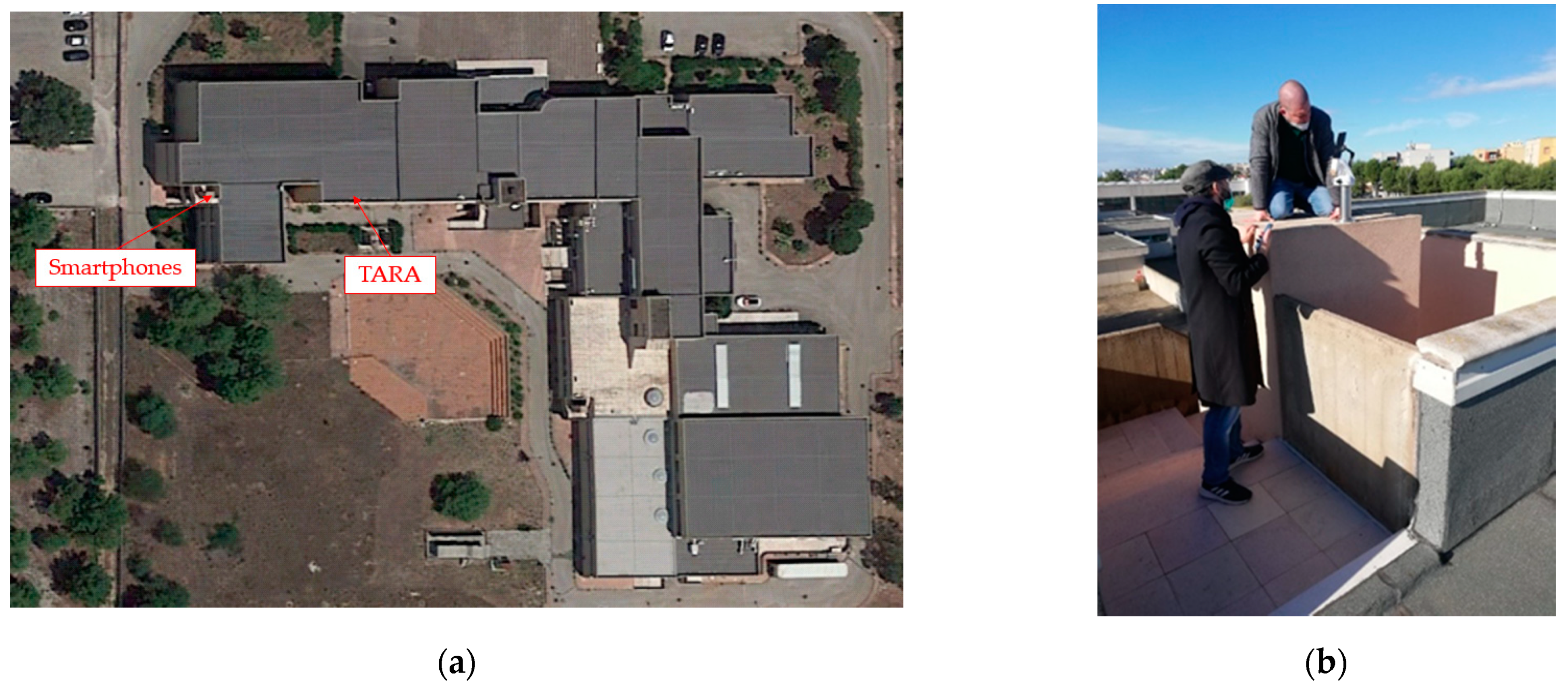
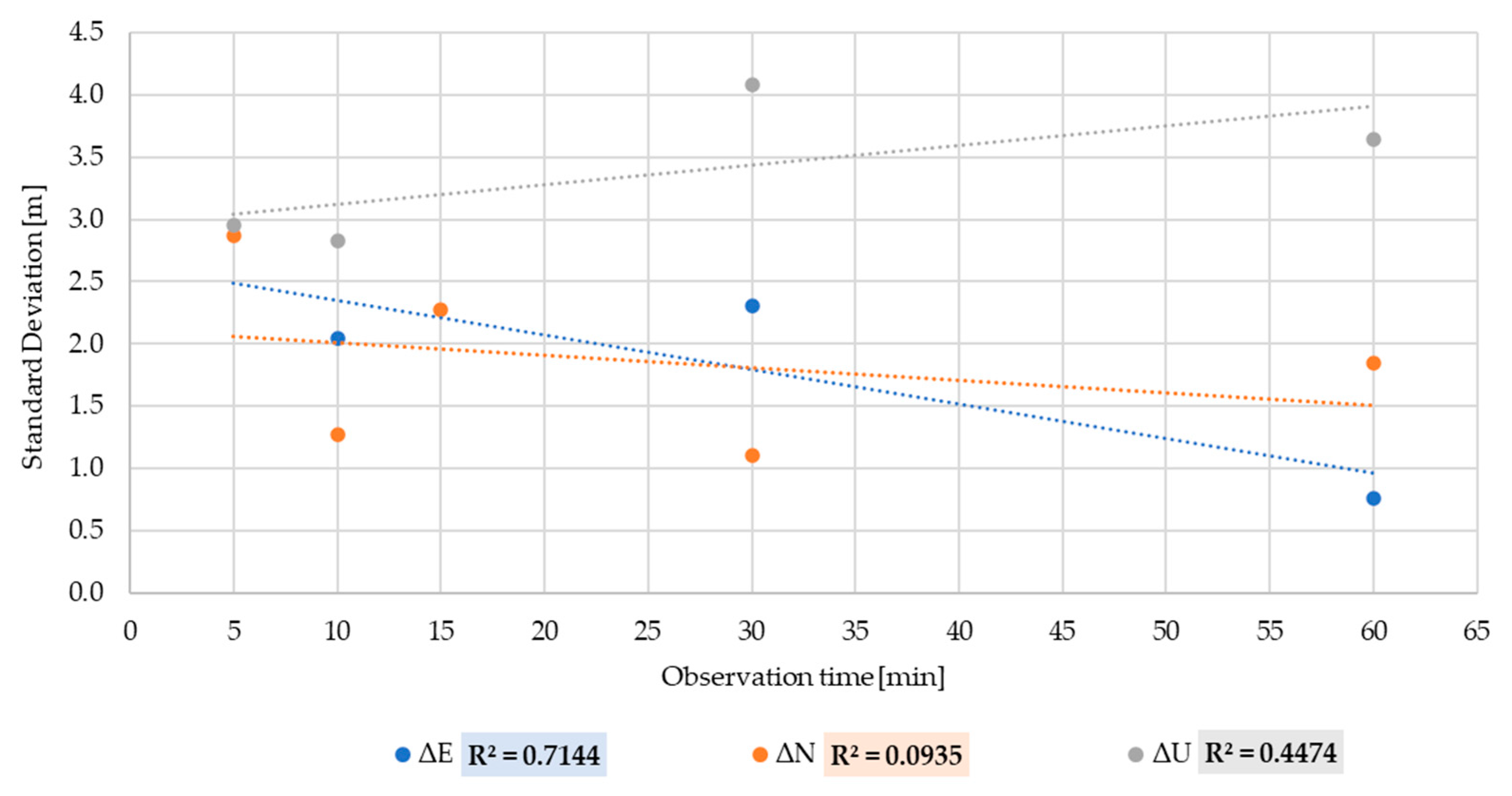




| Device | Xiaomi Mi 10 | Oppo Reno4 z 5G | Huawei P20 Lite |
|---|---|---|---|
| Image |  |  |  |
| Chipset | Snapdragon 865 Qualcomm SDM865 | Dimensity 800 MediaTek MT6873 | Huawei HiSilicon Kirin 659 |
| Operative System | Android 10 MIUI11 | Android 10 ColorOS 7.2 | Android 8.0 Emotion UI 8.0 Oreo |
| Constellation | GPS, GLONASS, BeiDou, Galileo, QZSS | GPS, GLONASS, BeiDou, Galileo, QZSS | GPS/GLONASS |
| Frequency | L1/L5 | L1/L5 | L1 |
| Observations | Code, Carrier Phase | Code, Carrier Phase | Code, Carrier Phase |
| Weight (g) | 208 | 184 | 145 |
| Dimensions (mm) | 162.58 × 74.8 × 8.96 | 163.8 × 75.5 × 8.1 | 148.6 × 71.2 × 7.4 |
| Cost (EUR) | under 800 | Under 300 | Under 300 |
| Station | X (m) | Y (m) | Z (m) |
|---|---|---|---|
| FATA | 4,635,800.173 | 1,442,401.642 | 4,122,685.780 |
| TARA | 4,635,794.786 | 1,442,422.405 | 4,122,684.175 |
| DGNSS Sub-Dataset Normality Test, Threshold Value: 0.05 | |||||||||
|---|---|---|---|---|---|---|---|---|---|
| Normality Test | ΔE | ΔN | ΔU | ΔEMm | ΔNMm | ΔUMm | ΔEKm | ΔNKm | ΔUKm |
| p-value 5 min | 0.03 | 0.16 | 0.42 | 0.03 | 0.16 | 0.30 | 0.03 | 0.14 | 0.14 |
| NO | YES | YES | NO | YES | YES | NO | YES | YES | |
| p-value 10 min | 0.37 | 0.44 | 0.96 | 0.56 | 0.44 | 0.96 | 0.16 | 0.12 | 0.53 |
| YES | YES | YES | YES | YES | YES | YES | YES | YES | |
| p-value 15 min | 0.04 | 0.59 | 0.01 | 0.08 | 0.59 | 0.82 | 0.03 | 0.61 | 0.82 |
| NO | YES | NO | YES | YES | YES | NO | YES | YES | |
| p-value 30 min | 0.14 | 0.35 | 0.24 | 0.14 | 0.35 | 0.24 | 0.06 | 0.27 | 0.05 |
| YES | YES | YES | YES | YES | YES | YES | YES | YES | |
| p-value 60 min | 0.31 | 0.35 | 0.18 | 0.31 | 0.35 | 0.18 | 0.09 | 0.26 | 0.15 |
| YES | YES | YES | YES | YES | YES | YES | YES | YES | |
| SPP Sub-Dataset Normality Test, Threshold Value: 0.05 | |||||||||
|---|---|---|---|---|---|---|---|---|---|
| Normality Test | ΔE | ΔN | ΔU | ΔEMm | ΔNMm | ΔUMm | ΔEKm | ΔNKm | ΔUKm |
| p-value 5 min | 0.06 | 0.35 | 0.66 | 0.06 | 0.56 | 0.66 | 0.03 | 0.42 | 0.21 |
| YES | YES | YES | YES | YES | YES | NO | YES | YES | |
| p-value 10 min | 0.05 | 0.34 | 0.32 | 0.05 | 0.34 | 0.78 | 0.07 | 0.02 | 0.02 |
| YES | YES | YES | YES | YES | YES | YES | NO | NO | |
| p-value 15 min | 0.25 | 0.01 | 0.13 | 0.77 | 0.47 | 0.45 | 0.54 | 0.001 | 0.01 |
| YES | NO | YES | YES | YES | YES | YES | NO | NO | |
| p-value 30 min | 0.02 | 0.36 | 0.39 | 0.21 | 0.90 | 0.39 | 0.11 | 0.09 | 0.11 |
| NO | YES | YES | YES | YES | YES | YES | YES | YES | |
| p-value 60 min | 0.06 | 0.13 | 0.51 | 0.19 | 0.74 | 0.24 | 0.05 | 0.74 | 0.24 |
| YES | YES | YES | YES | YES | YES | YES | YES | YES | |
| Standard Deviations DGNSS | |||
|---|---|---|---|
| Session Length (min) | ΔE (m) | ΔN (m) | ΔU (m) |
| 5 | NTNV | 2.87 | 2.95 |
| 10 | 2.05 | 1.27 | 2.83 |
| 15 | NTNV | 2.27 | NTNV |
| 30 | 2.30 | 1.10 | 4.08 |
| 60 | 0.76 | 1.85 | 3.65 |
| Standard Deviations SPP | |||
|---|---|---|---|
| Session Length (min) | ΔE (m) | ΔN (m) | ΔU (m) |
| 5 | 1.67 | 2.16 | 6.02 |
| 10 | 1.39 | 1.90 | 4.92 |
| 15 | 1.29 | NTNV | 5.39 |
| 30 | NTNV | 1.82 | 1.43 |
| 60 | 0.79 | 1.55 | 1.90 |
| Mean of Easting, Northing and Up Positioning Errors | |||
|---|---|---|---|
| Session Length [min] | ΔE [m] | ΔN [m] | ΔU [m] |
| 5 | NTNV | 3.150 | 4.429 |
| 10 | 2.244 | 2.016 | 4.468 |
| 15 | NTNV | 2.912 | NTNV |
| 30 | 2.361 | 2.513 | 4.880 |
| 60 | 1.875 | 2.489 | 3.579 |
| Mean of Easting, Northing and Up Positioning Errors | |||
|---|---|---|---|
| Session Length [min] | ΔEMm [m] | ΔNMm [m] | ΔUMm [m] |
| 5 | NTNV | 3.150 | 3.591 |
| 10 | 1.759 | 2.016 | 4.468 |
| 15 | 1.471 | 2.912 | 3.087 |
| 30 | 2.361 | 2.513 | 4.880 |
| 60 | 1.875 | 2.489 | 3.579 |
| Mean of Easting, Northing and Up Positioning Errors | |||
|---|---|---|---|
| Session Length [min] | ΔEKm [m] | ΔNKm [m] | ΔUKm [m] |
| 5 | NTNV | 2.369 | 4.225 |
| 10 | 2.155 | 2.070 | 4.054 |
| 15 | NTNV | 2.700 | 3.087 |
| 30 | 1.808 | 2.372 | 4.651 |
| 60 | 1.698 | 2.105 | 3.572 |
| Mean of Easting, Northing and Up Positioning Errors | |||
|---|---|---|---|
| Session Length [min] | ΔE [m] | ΔN [m] | ΔU [m] |
| 5 | 1.727 | 3.795 | 8.599 |
| 10 | 1.958 | 3.522 | 8.862 |
| 15 | 1.644 | NTNV | 7.512 |
| 30 | NTNV | 2.313 | 7.111 |
| 60 | 0.700 | 2.509 | 5.346 |
| Mean of Easting, Northing and Up Positioning Errors | |||
|---|---|---|---|
| Session Length [min] | ΔEMm [m] | ΔNMm [m] | ΔUMm [m] |
| 5 | 1.727 | 3.289 | 8.599 |
| 10 | 1.958 | 3.522 | 8.586 |
| 15 | 1.305 | 2.577 | 5.986 |
| 30 | 0.988 | 1.718 | 7.111 |
| 60 | 0.439 | 1.984 | 5.916 |
| Mean of Easting, Northing and Up Positioning Errors | |||
|---|---|---|---|
| Session Length [min] | ΔEKm [m] | ΔNKm [m] | ΔUKm [m] |
| 5 | NTNV | 4.106 | 9.674 |
| 10 | 1.616 | NTNV | NTNV |
| 15 | 1.467 | NTNV | NTNV |
| 30 | 1.004 | 2.675 | 7.462 |
| 60 | 0.706 | 1.984 | 5.916 |
| Planimetric Positioning Errors [m] | ||||
|---|---|---|---|---|
| Mode | Point 1 | Point 2 | Point 3 | Point 4 |
| SPP | 0.090 | 4.510 | 0.760 | 3.246 |
| Global Mapper Mobile | 0.400 | 7.830 | 5.260 | 4.200 |
Publisher’s Note: MDPI stays neutral with regard to jurisdictional claims in published maps and institutional affiliations. |
© 2021 by the authors. Licensee MDPI, Basel, Switzerland. This article is an open access article distributed under the terms and conditions of the Creative Commons Attribution (CC BY) license (https://creativecommons.org/licenses/by/4.0/).
Share and Cite
Pepe, M.; Costantino, D.; Vozza, G.; Alfio, V.S. Comparison of Two Approaches to GNSS Positioning Using Code Pseudoranges Generated by Smartphone Device. Appl. Sci. 2021, 11, 4787. https://doi.org/10.3390/app11114787
Pepe M, Costantino D, Vozza G, Alfio VS. Comparison of Two Approaches to GNSS Positioning Using Code Pseudoranges Generated by Smartphone Device. Applied Sciences. 2021; 11(11):4787. https://doi.org/10.3390/app11114787
Chicago/Turabian StylePepe, Massimiliano, Domenica Costantino, Gabriele Vozza, and Vincenzo Saverio Alfio. 2021. "Comparison of Two Approaches to GNSS Positioning Using Code Pseudoranges Generated by Smartphone Device" Applied Sciences 11, no. 11: 4787. https://doi.org/10.3390/app11114787
APA StylePepe, M., Costantino, D., Vozza, G., & Alfio, V. S. (2021). Comparison of Two Approaches to GNSS Positioning Using Code Pseudoranges Generated by Smartphone Device. Applied Sciences, 11(11), 4787. https://doi.org/10.3390/app11114787









